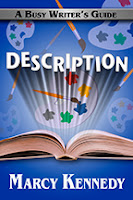Part of the Indie Author Series
One of the almost universal pieces of advice we hear as indie authors is that we need to build a newsletter mailing list. A mailing list allows us to keep in touch with readers and let them know when our next book releases. Theoretically, they’ll be excited to buy our book, sending it up in the rankings.
The tricky part is how do we convince people to give us their email addresses?
One solution is the reader magnet.
A reader magnet is something special we give away to newsletter subscribers in order to entice them to sign up. It can be a character interview, a short story, a novella, a full-length novel, or even a “starter library” of your first-in-series books. Stories tend to be more enticing to readers than other material.
Reader magnets work best if the only way for readers to get them is to subscribe. Because of how inundated we all are anymore with people spamming our inbox, readers are becoming more and more hesitant to give up their email address. If they can get your reader magnet by simply buying it, many of them will.
Once we’ve written our reader magnet, we still need to let readers know it exists. Today I wanted to look at some of the ways we can distribute our reader magnet and the pros and cons of each.
Back-of-Book Sign-Up Link
I call this a back-of-book sign-up link, but some authors will put a link in both the front and back of their book or just in the front. (My advice on that is to experiment and see what gets you more sign ups.)
Advantages
This way of gathering newsletter sign-ups has two major benefits. The first is that it’s free. The second is you’re getting sign ups from people who are coming to your list after reading your book. This means that they’re already familiar with your writing and they liked it enough to want to subscribe. My most engaged fans are the ones who join my list this way.
Disadvantages
The drawback to this method is that if you’re not selling many copies of your books yet, you also won’t be garnering many sign-ups. Not everyone who reads your book will like it, and of the people who do, not every one of them will sign up. So building a list this way can be extremely slow going if you’re not already selling well.
Instafreebie
Angela Quarles already wrote an excellent in-depth post on Instafreebie, so if you’re not sure what it is, make sure you read “Service Spotlight: Instafreebie as Lead Generator.” For $20/month, Instafreebie’s Plus plan allows you to require readers to sign up for your newsletter in order to download your free book.
Advantages
Instafreebie has their own built-in audience (much like when you buy a newsletter ad slot). These are people actively looking for books to read, and they’re people outside of your social network that you might not have otherwise reached.
They also offer a month-long free trial so you can see if you even get results before committing.
Disadvantages
One of the obvious drawbacks is that you’re basically paying to give your book away. That said, my experience has been that it’s worth it. Over three months, I added around 2,500 people to my list, making the average cost per subscriber 0.024 cents. Instafreebie also allows you to turn your membership on and off, so you can subscribe to run a promo blast and then stop it when you’re not actively list-building.
These leads are slightly “colder” than the ones you get from the back-of-book sign ups at first. In an ideal world, everyone who signs up would read your reader magnet, thereby becoming more familiar with your work. In reality, not all of them will.
Because of that, the success of a list grown through Instafreebie tends to depend on cultivating these new potential readers to make them more familiar with us and our writing.
A few great ways to do that include…
- An onboarding sequence of automated emails that introduce them to you and your work when they subscribe
- Giving them a link to Book Funnel in case they weren’t able to download your ebook properly through Instafreebie (at least 25% of my Instafreebie leads end up clicking the Book Funnel link I include in my first email to them)
- Lowering the barrier to entry by letting them know when you’re running a 99-cent sale or free promo on Book 1 in your series (assuming that, like me, your reader magnet is a short story or prequel novella rather than your Book 1)
Facebook Ads
The most common way to run Facebook ads is to send people who click to a sales page where they can buy your book, but Facebook also allows us to use their ads for lead generation. Mark Dawson is famous for using Facebook ads this way to build a massive following.
Advantages
Facebook is a huge community of millions of people.
Disadvantages
The learning curve for running a successful Facebook ad campaign can be steep. If you don’t know what you’re doing, you can quickly lose a lot of money.
Beyond this, the success of any ads, lead generation or otherwise, on Facebook depends largely on a well-targeted audience. Creating that audience if you don’t already have a huge list that you can use to design a Look-A-Like audience from can take a lot of time. It’s also variable by genre. If you can’t create a Look-A-Like audience, then you need to target Facebook pages belonging to other authors who write books similar to your own. If your genre is dominated largely by authors who haven’t cultivated a Facebook presence, you’re out of luck.
The cost per subscriber for Facebook ads tends to be extremely high, as well.
What strategies have you used to build your mailing list other than reader magnets? How engaged were the fans you gathered?
 Marcy Kennedy is a mystery and speculative fiction writer who believes fantasy is more real than you think. Alongside her own writing, Marcy works as a freelance fiction editor and teaches classes on craft and social media. She’s also the author of the Busy Writer’s Guides series of books. You can find her blogging about writing and about the place where real life meets science fiction, fantasy, and myth at marcykennedy.com.
Marcy Kennedy is a mystery and speculative fiction writer who believes fantasy is more real than you think. Alongside her own writing, Marcy works as a freelance fiction editor and teaches classes on craft and social media. She’s also the author of the Busy Writer’s Guides series of books. You can find her blogging about writing and about the place where real life meets science fiction, fantasy, and myth at marcykennedy.com. Blog | Facebook | Twitter | Amazon | Apple iBooks | Barnes & Noble
About Description
 Description in fiction shouldn’t be boring for the reader or for the writer.
Description in fiction shouldn’t be boring for the reader or for the writer. Description: A Busy Writer’s Guide will help you take your writing to the next level by exchanging ho-hum description for description that’s compelling and will bring your story to life, regardless of the genre you write.
In Description: A Busy Writer’s Guide, you will
- find the answer to the age-old question of how much description is too much;
- learn how to use point of view to keep description fresh;
- recognize the red flags for boring description in fiction;
- explore how to use all five senses to bring your descriptions to life for the reader;
- discover the ways metaphors and similes can add power to your descriptive writing;
- gain the tools needed to describe setting, characters, and action in engaging ways;
- learn how descriptions can add conflict, enhance the theme, and amp up emotion; and
- much more.


Dear marcy:
ReplyDeleteThank you for your valuable advice. I am a writer from Lima, Peru I have written only one 100 pages book in English and I need your help to get a few reviews from it. Could you, please help me?
y book is Two Fishermer, Stories on the Sea and it sells in Amazon but up to know it has sold zero copies.
I look forward to hearing from you soon, in the meantime I do hope you are well.
Sincerely,
(Mr) Rolando Sifuentes
roland557@hotmail.com
Av.Canada 3279
San Luis, Lima
Peru